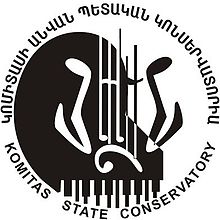We are glad to announce the following EaPConnect-supported event between Yerevan State Conservatory after Komitas and Estonian Academy of Music and Theatre on the one hand, and ASNET-AM and EEnet NRENs on the other hand.
eMasterclass on Introduction of Armenian and Estonian National Instruments
12 March 2018 14:00 Armenian time (12:00 Estonian time)
Conference Hall of the Presidium of the National Academy of Sciences of Armenian.
24, Baghramian ave., Yerevan
Organ Hall of the Estonian Academy of Music and Theatre,
13 Tatari, str. Tallinn
Event Live Broadcast is provided by ASNET-AM.
AGENDA
14:00 -14:10 Event opening
• Yuri Shoukourian, Vice-President of the National Academy of Sciences of Armenia
• Kristina Lillemets, Head of Estonian NREN EEnet
14:10 - 14:30 Welcome speeches
• Arkadi Avanesov, Vice-Rector of Yerevan State Conservatory after Komitas
• Henry-David Varema, Vice-Rector of Estonian Academy of Music and Theatre
14:30 - 14:55 Masterclass on Estonian Kannel by Kristi Mühling
14:55 - 15:20 Masterclass on Armenian Duduk by Emmanuel Hovhannisyan
15:20 - 15:35 Discussion, Q&A and further collaboration
 |
 |
 |
 |
Info on duduk
The duduk, is an ancient Armenian double-reed wind instrument characterized by a warm, soft,
slightly nasal timbre. The soft wood of the apricot tree used for its body produces a soft, warm tone.
Its traditional tunes have a beguiling, often mournful, sentimentality. It is indigenous to Armenia.
Duduk and its music is inscribed in 2008 on the Representative List of the Intangible Cultural
Heritage of Humanity by UNESCO. The roots of Armenian duduk dates back to the times of Tigran
The Great, the Armenian king (95-55BC). It belongs to the category of aerophones.
Info on kannel
The kannel, is an Estonian plucked string instrument belonging to the Baltic box zither family known
as the Baltic psaltery. Traditionally it is made of spruce and black alder, also pine and birch. The
name of the instrument possibly comes from a proto-Baltic form kantlīs originally meaning 'the
singing tree’. The kannel serves as a national symbol of Estonia. The kannel was legendarily played
by the Estonian god of song Vanemuine, and the Estonian national epic Kalevipoeg. Kennel regained
its popularity in the last decades after almost a hundred years of being out of favour.




